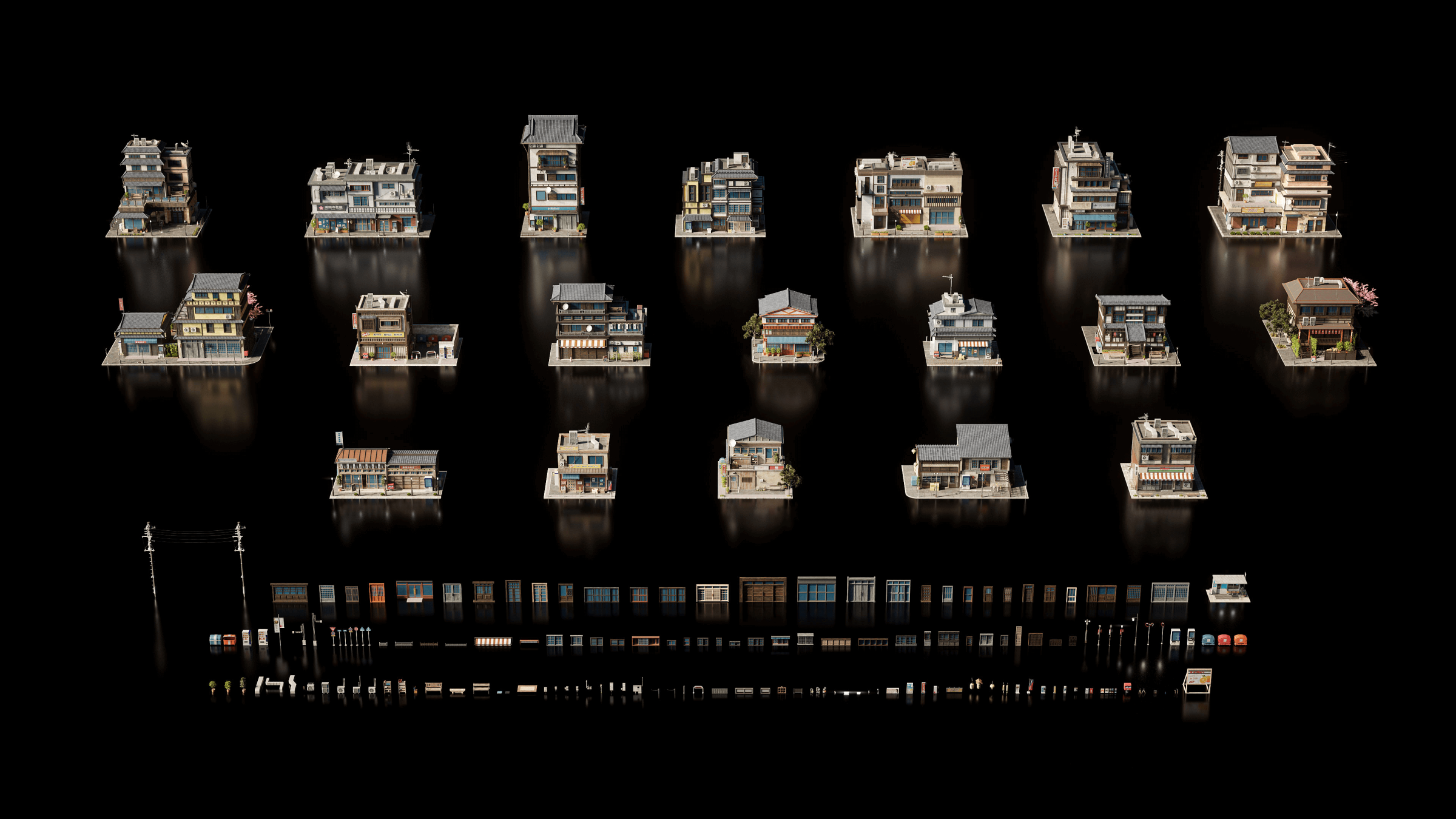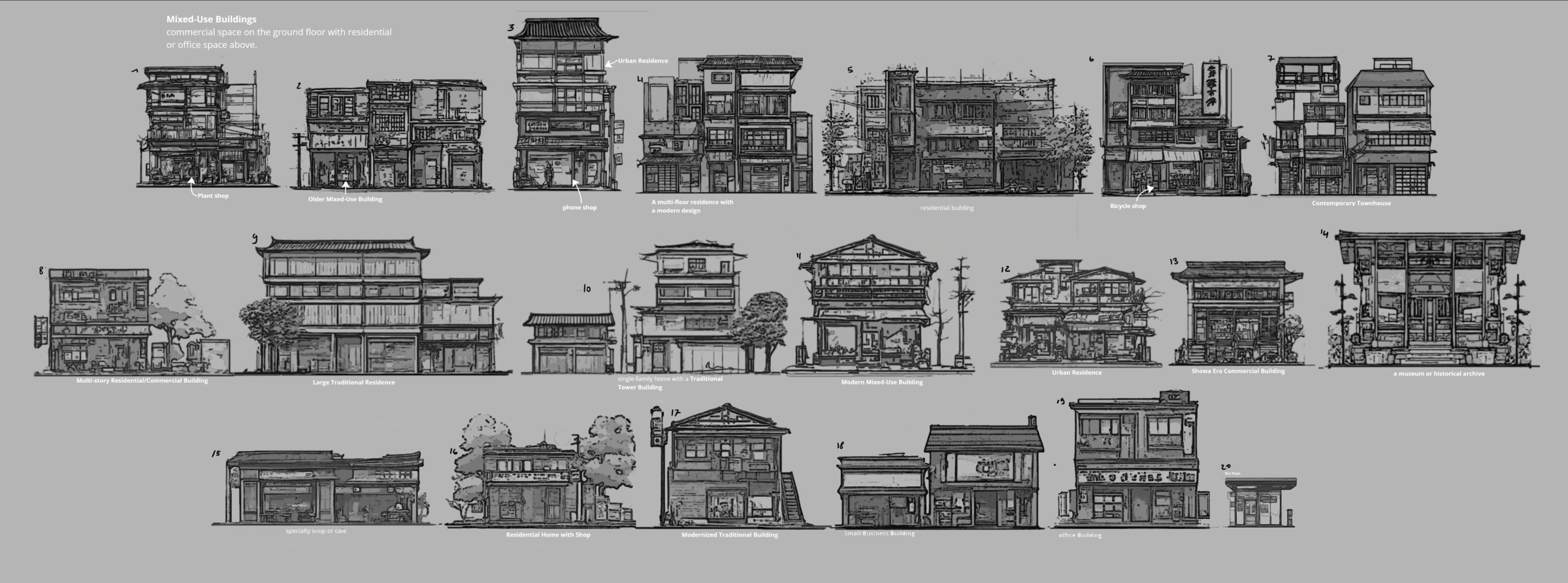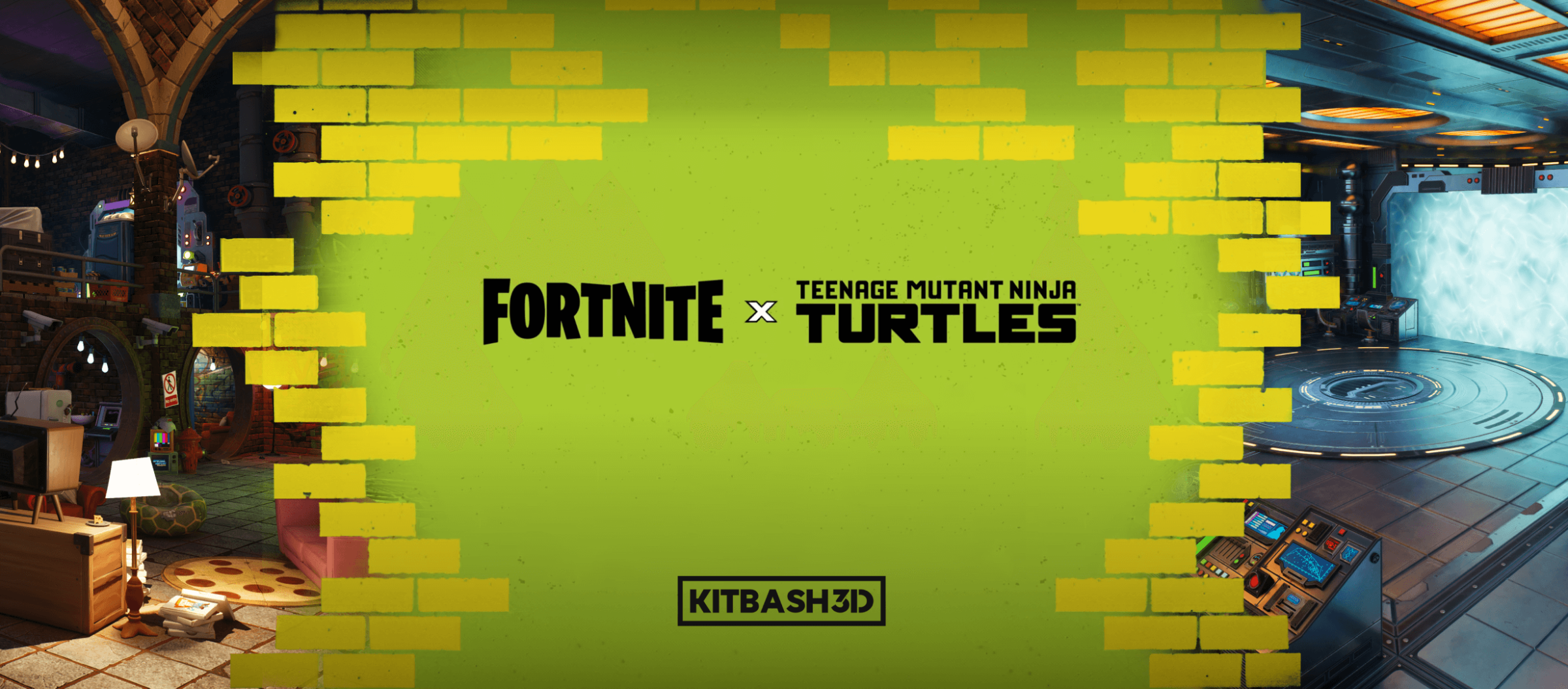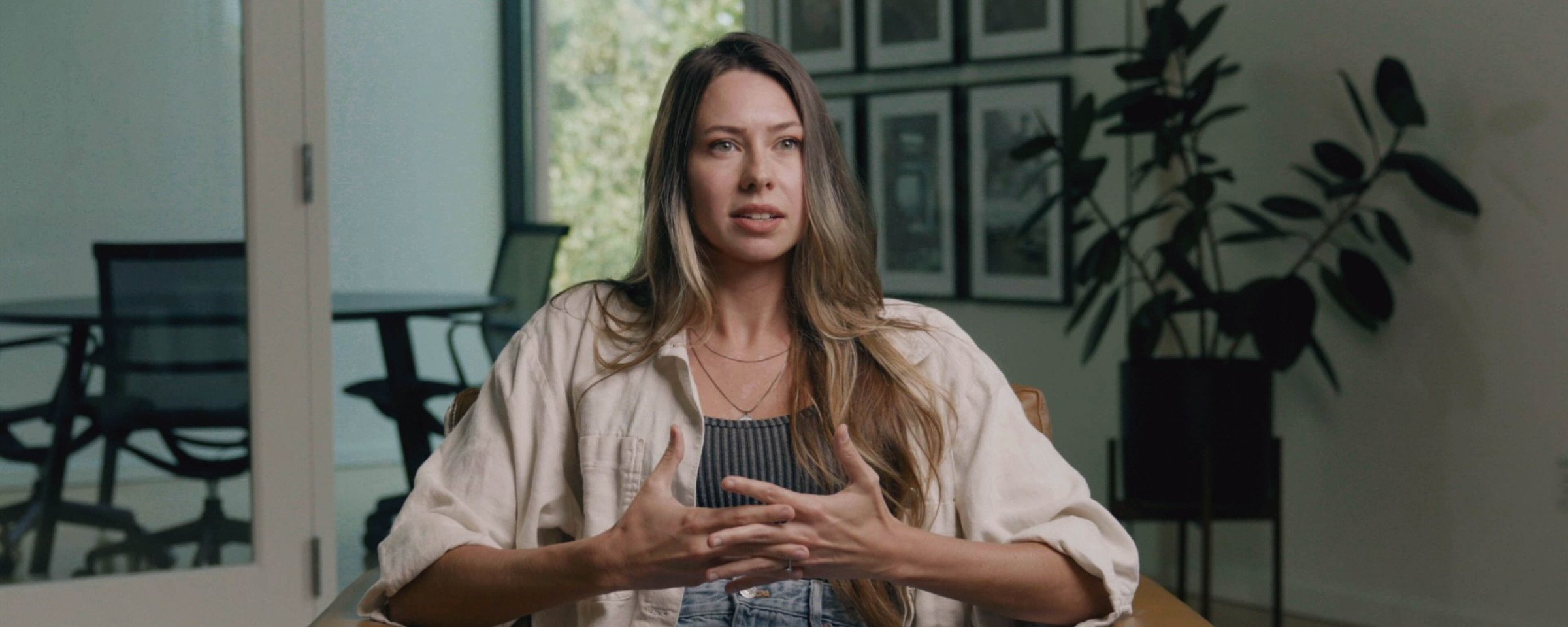This week, we added Japanese Neighborhoods, our newest Kit, to Cargo and our web store. This Kit is a true celebration of Japanese culture, blending the quiet charm of suburban homes with the bustling energy of commercial streets. From serene tea houses and cozy residences to lively shops and towering office buildings, Japanese Neighborhoods captures the spirit of urban life in Japan, offering a wealth of options for worldbuilders and storytellers.
With an array of modular Japanese architecture, you’ll have the freedom to design everything from quaint, peaceful neighborhoods to vibrant city blocks lined with restaurants, hotels, and souvenir shops. Every element has been thoughtfully crafted to recreate the rhythm of daily life in Japan, where the old and the new harmoniously coexist. The blend of textures, from traditional wood facades to sleek glass windows, reflects Japan’s unique architectural evolution, offering endless possibilities for your creative projects.
In this Behind the Kit blog, we sat down with the talented artists who brought Japanese Neighborhoods to life. Discover how the team captured the intricate details of Japanese design, from the modularity of the buildings to the authentic street-level props that add depth to every scene. Through their insights, you’ll gain a deeper understanding of how they combined tradition with modern elements to create a Kit that feels alive with the pulse of Japanese culture.
Ready to dive in? Join us as we explore the artistry and inspiration behind Japanese Neighborhoods and uncover the stories that helped shape this vibrant new Kit.

What was your favorite part about working on Japanese Neighborhoods?
“This Kit was a ton of fun! I love the architecture and learning about all the nuances and differences between Japanese-style and Western-style housing. There was a lot of research into how the structures were constructed, ceiling heights, and floor layouts, which helped dictate how we built the Kit.” - Mike Reese, Head of Kits

“My favorite part of this Kit was working on the buildings! There are many Japanese roofs called “kirizuma” (gable roof) and sometimes they have a lot of wooden details for balconies and doors and windows, which makes the building more unique and interesting!” - Mohammad Afshari, 3D Modeler

“What I liked the most was how the Kit was so well-focused on elements that are already part of my daily life, even without living in Japan. There’s something special about how certain structures and elements transcend borders and cultures, creating a sense of familiarity and everyday life. I definitely hope users feel the same when using this Kit, and I’d love to keep exploring similar themes in future projects. - Tom Berczeller, Material Artist

“I really enjoyed studying Japanese architecture. This Kits materials and set dressing gives it a lot of life and story telling.” - Gabs Herrera, Material Artist
What was the most challenging part about this Kit? How did you overcome that challenge?
“Understanding the interior logic of the architecture was probably the most challenging. I’m very used to western architecture, which is pretty much floor, window and ceiling. That often isn't the case here. There could be lofts that have been added, the presence of a minor staircase that changes the elevation by half a story, or even just a taller ceiling that uses a window to add light to it. It seemed chaotic to me at it first, but after discussing it with the Kit lead, Vlad, I understood the logic much better.” - Joseph Sylvester, 3D Modeler

“Japanese aesthetics are usually characterized by neutral tones and uniform silhouettes. With that in mind, we had to iterate on several proposals to create something visually appealing that didn’t feel too bland. We achieved this by emphasizing the set dressing, detailing the wear and tear on objects as much as possible, playing with similar tones in different combinations, and using subtle decals to better represent the passage of time on the structures.” - Tom Berczeller, Material Artist
What was the biggest thing you learned while developing Japanese Neighborhoods?
“Whenever we create signage in a different language, we always learn a ton about the culture. This was no expectation. We had a blast coming up with fun and playful graphic designs for the stores, tea houses, food menus, and much more.” - Mike Reese, Head of Kits

“There isn't very much trash in Japan! I was so used to other cities where I would be adding trash cans and trash bins everywhere. When walking through google maps they were rarely found!” - Joseph Sylvester, 3D Modeler

“I learned a lot about architecture, especially how the choice of construction materials is influenced by several key factors, like the raw materials available in the region, the intended use of the building, and the socioeconomic and cultural characteristics of the community it's located in. This combination of elements is crucial for creating textures that not only look functional but also represent coherence with the environment where they are applied.” - Tom Berczeller, Material Artist
Was there anything that surprised you about this theme or the Kit while you worked on it?:
“The number of mixed-used buildings was pretty surprising. Housing mixed with shops mixed with a bar. There is no square inch of space that is not used for something. So cool.” - Mike Reese, Head of Kits

"Japanese Neighborhoods are one of the most unique and beautiful places in the world. It was so fun to work on this Kit! - Mohammad Afshari, 3D Modeler

“Their timelessness. Sure, there are modern elements that hint at the era, like AC units, vending machines, and graphic design, but if you focus on other aspects, it could easily be a Kit set in Japan in the '80s, '90s, or early 2000s.” - Tom Berczeller, Material Artist

“I learned that in Japan the vending machines are very extensive, and they have one in every corner with unimaginable things. I also learned that they use ceramics on the entire facades of their buildings because it better protects the structure from erosion and weather.” - Gabs Herrera, Material Artist




